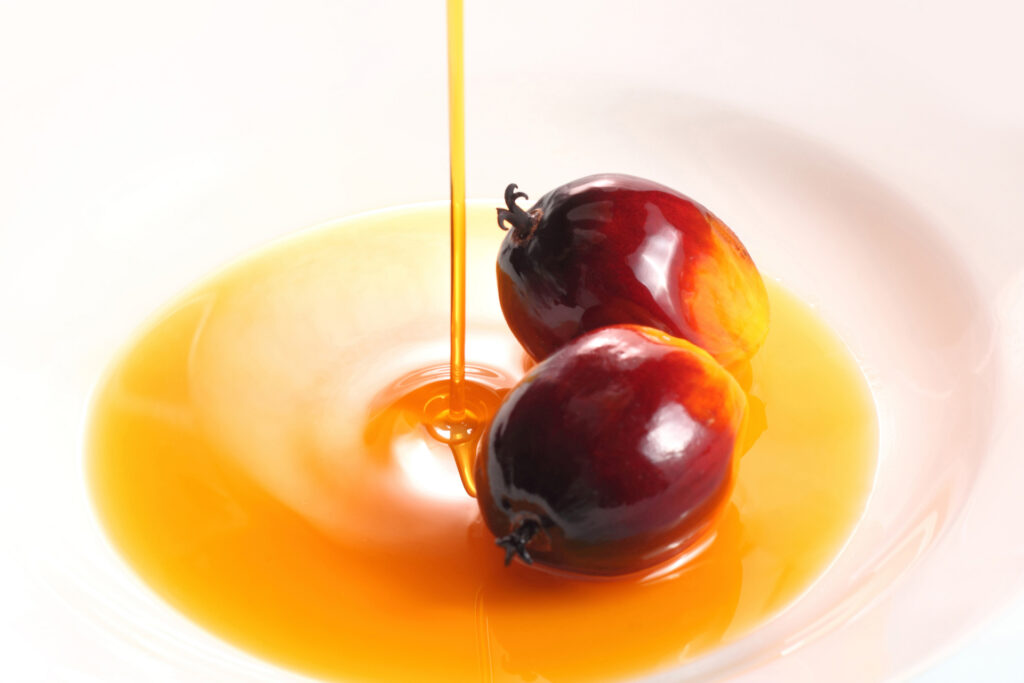Lately I´ve been noticing more and more labels with a big “NO PALM OIL” sign on them besides the “non-GMO,” “vegan,” or “soy-free.” Even some articles appeared with an appeal to stop using palm oil in processed food industry to save rain forests and their inhabitants. I somehow automatically stopped eating stuff containing palm oil since a few friends told me it was unhealthy but I ended up wondering – what´s really that bad about it? Isn´t it just another bubble that´s been created on the Internet to entertain people? So I researched and found out the following:
First – it is quite greatly unhealthy
The whole issue about palm oil´s unhealthiness started around its content of saturated fat. It is almost 50% which compared to extra virgin olive oil with its 14%, is quite alarming. According to the Center for Science in the Public Interest, it is the 2nd worst oil that people consume right after soybean oil. A Dutch statistics from 2003 going through 35 studies analyzing palm oil´s effects on human health found out that it significantly increases cholesterol levels and decreases the HDL – good cholesterol. If you eat chips containing palm oil, you´re ingesting 75% more saturated fat than if e.g. canola or sunflower oil was used. Eat those once a week and you´re heading to a hospital with stroke or other coronary heart disease much sooner than you´d expect.
Another problem arises due to a heavy processing of the palm oil which is used in products we eat sometimes every day. Linda Page, a naturopathic practitioner, explains how after processing, such adjusted palm oil loses its vital nutrients like vitamins A and E which could otherwise serve as antioxidants, and instead gets digested more difficult, which can eventually lead to weight gain as the saturated fat has more time to be absorbed. Researchers from Nigeria unveiled a very unpleasant potential risk of processed palm oil already in 1999, when they reported that palm oil in its oxidized form would cause toxicity of many organs, slowly impairing the immune system´s ability to fight diseases, thus damaging one´s health. To be clear, majority of factories producing processed food use oxidation for easier use and cheaper production and so cause the concern for consumers.
We´re damaging our environment
During a period from 1985 to 2001, 56% of Kalimantan forests were cut down. It is a part of Borneo Island paradoxically well-known for the deforestation and its impact especially on orangutans and elephants. These species are gradually being robbed of their natural habitat by us, and even if you don´t agree with it, it´s people who´s been cutting down the trees to produce palm oil on 600,000 hectares of this island in 1985, rapidly increasing to 6 million hectares in 2007. The Indonesia has even set a goal to increase the production to 40 million tons of palm oil in 2020 (!). The problem is it is so cheap and easy to obtain that we cannot possibly expect these huge companies to stop deforestation for moral reasons. Looking at this problem from the environmental view though, it is not only the animals who will suffer; it can actually destroy the life in Borneo completely. Because of the cut down of such a huge amount of trees, the forests are left open, they dry out, and a risk of fires is posed on them. If we continue like this, it is very much possible that the islands of Sumatra and Borneo will be no longer existent, as well as many species which are already under a threat of extinction. And why does all this continue to happen? Maybe because of the greediness of big companies, or people wanting cheap food, or just because we can?
Save the planet, save your health, and avoid palm oil for good

Hopefully you´re now thinking you´re never gonna buy anything with palm oil in it again, and that´s the right attitude. However, it might not be as easy as you think. You can find palm oil in products like chocolate bars and chips but also in those in which you would never expect it, such as toothpaste or make-up. Large international food companies (let´s not name them, we all know who we´re talking about) all use palm oil in their products because it´s cheap and has many uses but naturally, they don´t want us to know. Since there are over 170 different terms to claim palm oil in your product, it might be difficult to find out. However, the most common name under which you can find it is “vegetable oil” and if the oils are not clearly specified, there is probably something going on. Make sure to buy products which don´t contain more than 40% saturated fat since it´s very likely to contain palm oil. On the other hand, even if it didn´t, would you want to eat something containing 40% of saturated fat? Probably not. And one more suggestion – don´t buy or eat anything that says “palm whatever” on the package. Doing so, you´re protecting your own health and the health of our precious planet.
by Katarína Vicová
References:
Amerman, D. (2015). What are the dangers of palm oil? Retrieved from: http://www.livestrong.com/article/198975-what-are-the-dangers-of-palm-oil/
Don´t Waste Life (2015). [picture]. Hanging with the orangutans in Borneo. Retrieved from: http://www.dontwastelife.com/2011/travel/hanging-with-the-orangutans-in-borneo/
McCluskey, S. (2014). 6 ways to avoid palm oil (and why you should). Retrieved from: http://life.gaiam.com/article/6-ways-avoid-palm-oil-and-why-you-should
Wayne State University (2015). [picture]. News and announcements. Retrieved from: http://research.wayne.edu/news.php?id=17266
WWF (2015). Threats to Borneo forests. Retrieved from: http://wwf.panda.org/what_we_do/where_we_work/borneo_forests/borneo_deforestation/

